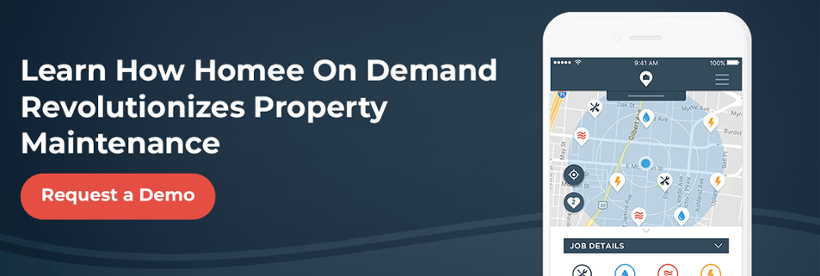Top 3 Causes of Plumbing Disasters You NEED to Know

Top 3 Causes of Plumbing Disasters You NEED to Know
Here’s a nightmare scenario for any homeowner or landlord: It’s Sunday morning, and the toilet on the second floor of the home is not only backed up, it’s overflowing dirty water all over the bathroom floor. The dirty water is seeping into the floor below, ruining walls, electrical systems, and ceilings. Because it’s Sunday, finding a plumbing service that’s open and available is just a little bit harder than normal.
Even with speedy plumbing repairs and water damage remediation, the fecal matter in the water will quickly cause rot to set in—meaning that thousands of dollars of flooring, walls, and other materials will need to be completely stripped out and replaced.
What could be the cause of this plumbing disaster? More importantly, how can future plumbing disasters be prevented?
Here’s a quick list of some of the major causes of plumbing disasters and how to use plumbing preventative maintenance to avoid them.
1: Flushing Non-Flushable Objects Down Drains
There’s a lot of solid waste that may inadvertently find its way into the drains of your home. This solid waste can, in turn, cause plumbing problems such as overflowing toilets and sinks.
Some of the things that can be put down drains or toilets that can lead to blockages include:
- Non-flushable paper (such as paper towels);
- Baby wipes;
- Dirt;
- Food waste (even with a garbage disposal);
- Cooking oil/grease;
- Feminine products; and
- Small objects (such as children’s toys).
Even toilet paper can cause a blockage if too much paper is introduced to the line at once. Here, the best preventative sink or toilet maintenance to apply is to avoid putting solid matter down your lines as much as possible.
For example, cooking oil/grease should not be put down the sink—even one with a garbage disposal unit. Instead, oil/grease should be absorbed into a paper towel and composted or disposed of according to local disposal regulations.
2: Failing to Insulate Water Pipes
During winter, cold weather can freeze water inside of a pipe with ease. The expanding ice creates a blockage and can even cause a pressure differential that bursts the pipe. This is a major plumbing issue that can cost you a significant amount of money in wasted water and plumbing repairs.
What’s the cost of plumbing problems such as burst pipes? The answer depends on where the pipe burst. At a minimum, you’re looking at increased utility costs as water freely flows from the pipe. Then, there is the potential risk of water damage as excess water seeps into the home—causing damage to walls, floors, and electronics in the building. Repairing this water damage and fixing/replacing the burst pipe can cost thousands of dollars in materials and labor.
The best preventative plumbing maintenance fix to apply here is to insulate the water pipes throughout the house and leading to it. If the pipes are already insulated, inspect the insulation to make sure it isn’t soaked with water or damaged. Moisture in the insulation can ruin it, allowing the cold to penetrate to the pipes and freeze the water inside.
While this is mostly an issue during the winter, it’s never too early to work to prevent a plumbing disaster by insulating or inspecting your plumbing.
3: Store-Bought Drain Cleaners
Many people assume that store-bought drain cleaning solutions are the best solution to fix clogged drains or other plumbing issues causing slow drainage. However, this is a mistake.
Drain cleaners are, by necessity, highly caustic—seriously, just read the warning labels on them! Because different homes may use different materials for their drain pipes (such as plastic, copper, lead, steel, etc.), it’s often hard to tell how well your plumbing system will react to a given brand of drain cleaner.
In some cases, the overuse of drain cleaning chemicals can actually cause lasting damage to a home’s drain pipes. This can cause leaks in the drain system, leading to a plumbing disaster.
Rather than trying to DIY a clogged drain with any random drain cleaner, it can help to consult with a plumbing service professional to check your pipes and make a recommendation about whether the drain cleaner will damage the pipes. Or, alternative clog-clearing tools such as drain snakes can be used to safely snag and remove clogs in drains and toilets.
Using plumbing preventative maintenance to keep clogs from happening in the first place is the best solution. However, if a clog happens anyways that cannot be cleared using a plunger or a drain snake, it may be best to hire a professional plumbing service to identify and fix the problem instead of trying to use a drain cleaner.
Using Plumbing Preventative Maintenance to Stop Plumbing Disasters
The saying “an ounce of prevention is worth a pound of cure” holds true for plumbing problems. Having a professional plumbing service inspect your plumbing system at least once a year to check for signs of wear and tear can do wonders for preventing plumbing issues.
For example, a plumber will often have the tools needed to identify and fix a partial clog that could easily lead to an overflowing toilet or sink. Or, they may be able to spot worn out gaskets or other plumbing system components that need to be replaced to prevent leaks and other problems that waste your money.
The cost of fixing plumbing problems before they start is often a fraction of what you would spend on post-disaster recovery.
Need help finding a qualified plumber who will be there when you need them? Try out the Homee On Demand home services platform! With Homee, you can order expert plumbing services without having to deal with the hassle of calling every plumber in your zip code to see if they’re available.




